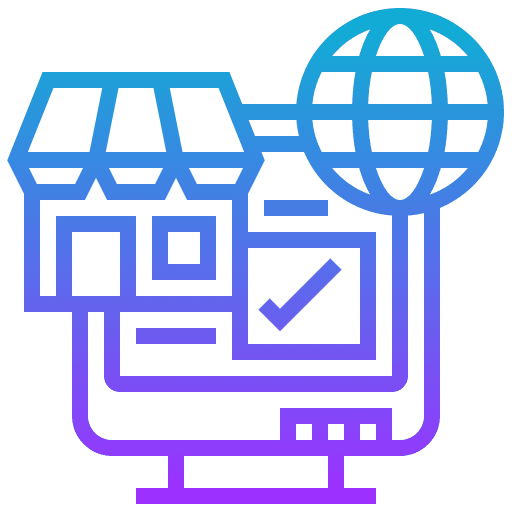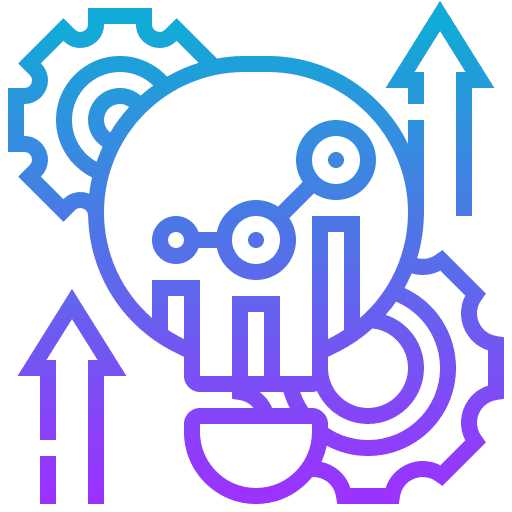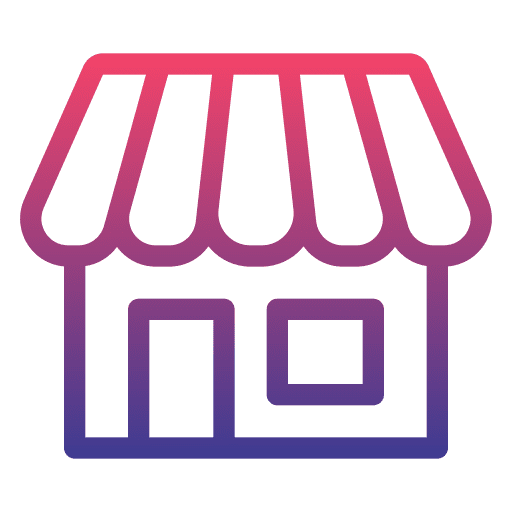A Comprehensive Guide to Developing Property Listing Apps with Laravel
Creating a property listing apps with laravel is a complex task that requires a robust and flexible framework. Laravel, with its elegant syntax and rich set of features, is an ideal choice for your project. In this blog, we will explore the process of building a property listing apps with Laravel.
What Is Laravel?
Laravel is an open-source web application framework written in PHP, renowned for its elegant syntax and robust functionality. It simplifies development by handling many aspects of web development, such as routing, templating, and authentication. Laravel is designed for building modern web applications following the model-view-controller (MVC) architectural pattern. It offers various tools and features for database migration, query building, and task scheduling, making it a preferred choice for developers seeking a scalable, maintainable, and secure framework. Laravel’s extensive community support and comprehensive documentation further contribute to its popularity in the web development world.
Advantages of Using a Property Listing Apps with Laravel in Real Estate
- Efficient Development: Utilizing Laravel accelerates the development process, allowing faster launch and updates of the “property listing app Laravel”.
- Scalable Solutions: Laravel’s architecture can easily scale to accommodate growing user numbers and an increasing amount of property listings.
- Enhanced Security: The framework’s robust security features, like CSRF protection, ensure the safety of user data and transactions in the real estate app.
- Effective Data Management: Laravel’s Eloquent ORM efficiently manages complex and large databases, crucial for real estate listings.
- Customizable Interface: Laravel’s flexibility allows for extensive customization, ensuring the app meets specific real estate market requirements.
- User-Friendly Design: The Blade templating engine in Laravel helps in creating intuitive and engaging user interfaces for a seamless user experience.
- Integration Capabilities: Laravel’s compatibility with various APIs and third-party services enhances the app’s functionality and user experience.
- Reliable Maintenance: Regular updates and built-in testing tools in Laravel ensure the app remains reliable and efficient over time.
- Community Support: A large Laravel community provides access to a wealth of knowledge, resources, and support, invaluable for app development and troubleshooting.
The Core Features of Property Listing Apps with laravel
- User Authentication and Profiles: Secure user registration and login, with customizable profiles for buyers, sellers, and agents.
- Property Listings Management: Easy posting, editing, and managing property listings with details like photos, prices, and descriptions.
- Advanced Search and Filters: Users can search for properties using various filters like location, price, and property type.
- Interactive Maps: Integrating maps for visual representation of property locations.
- Responsive Design: Ensuring the app is accessible on various devices and screen sizes.
- Admin Dashboard: For admins to oversee listings, users, and site analytics.
- Notifications and Alerts: Real-time notifications for new listings, inquiries, or updates.
- Secure Payment Gateway Integration: For handling transactions within the app.
What are property listing apps?
Property listing apps are digital platforms that enable users to browse, list, and manage real estate properties. These apps typically offer a range of features like detailed property descriptions, photos, pricing information, and location details. Users can search for properties based on various criteria such as location, price, and property type. These apps often include user accounts for buyers, sellers, and real estate agents, and may provide additional functionalities like appointment scheduling, messaging, and notifications about new listings or updates. They are designed to streamline the process of buying, selling, or renting properties by providing a centralized, accessible, and user-friendly interface.
How To Build Property Listing Apps with Laravel?
To build a property listing app using Laravel, you would start by setting up a Laravel environment and creating the necessary database structure. You’ll then proceed to develop the app’s core functionalities, such as user authentication, property listing creation and management, and search features. Integrating a responsive front-end design, mapping services for property locations, and a secure payment gateway are also essential steps. Throughout the development process, ensure you’re leveraging Laravel’s built-in tools for security, performance optimization, and testing. This approach ensures a robust and user-friendly property listing app.
Building Property Listing Apps With Laravel
“Property Listing App Build With Laravel” refers to a web application focused on real estate listings, developed using the Laravel PHP framework. This type of application typically includes features like user authentication, property listings with detailed descriptions and images, advanced search and filtering options, interactive maps, and a user-friendly interface. The Laravel framework provides a robust and scalable foundation, offering tools for secure and efficient data management, seamless user experience, and easy integration with various APIs and services. Building such an app involves leveraging Laravel’s MVC architecture, ORM, and other built-in functionalities to create a comprehensive and interactive property listing platform.
Detailed Overview for Creating a Property listing apps with laravel
-
Introduction to Laravel and Real Estate Web Applications
This section introduces the Laravel framework and its suitability for developing real estate web applications. It outlines the advantages of using Laravel for this specific domain, including its robust architecture, extensive libraries, and community support.
-
Initiating Laravel Installation
Focuses on installing and setting up Laravel, covering prerequisites, server requirements, and initial configuration steps. This section also includes guidance on understanding Laravel’s directory structure and its MVC architecture, setting the stage for efficient development.
-
Configuring the Development Workspace
This part involves setting up the development environment, including choosing and configuring development tools and setting up the local server. It also covers version control integration and collaboration tools for team development.
-
Mastering Laravel Fundamentals
Delivers insights into Laravel’s core principles and functionalities, such as routing, controllers, views, and models. This chapter includes detailed examples and best practices for writing clean, maintainable code in Laravel.
-
Strategizing Your Property Listing Application Design
Discusses planning the app’s structure, user interface, and user experience, focusing on real estate industry requirements. This section emphasizes the importance of responsive design, intuitive navigation, and effective property display.
-
Developing Essential Functionalities
Covers building the basic features like user registration, property listing management, and search capabilities. This chapter also includes discussions on database design and data management best practices in Laravel.
-
Adding Sophisticated Features
Explores the integration of advanced features such as geolocation services, dynamic filtering, and real-time updates. This section also looks at incorporating APIs for additional functionalities like maps and payment gateways.
-
Strengthening Application Security
Emphasizes implementing security best practices to protect data and prevent vulnerabilities. Topics include secure authentication, data encryption, CSRF protection, and secure API usage.
-
Boosting App Performance
Offers techniques to optimize the app’s performance, focusing on speed and resource management. This includes caching strategies, efficient database queries, and minimizing resource usage.
-
Troubleshooting and Quality Assurance
Provides strategies for debugging, testing, and ensuring the application’s quality and reliability. This section covers unit testing, functional testing, and tools for monitoring application health.
-
Launching and Hosting Your Application
Guides through the final steps of deploying the app on a web server and making it available to users. It includes considerations for choosing a hosting provider, setting up a domain, and continuous deployment practices.
-
Maintaining and Evolving Your Application
Discusses strategies for maintaining the application post-launch, handling updates, and implementing user feedback. This section also explores the roadmap for adding new features and scaling the application as user demand grows.
Transforming Real Estate Marketing and Sales with Laravel-Powered Applications
- Eloquent ORM for Database Management: Utilizing Laravel’s Eloquent ORM for efficient handling of property data, enhancing database interactions.
- Blade Templating for UI: Employing Laravel’s Blade templating engine to create dynamic and interactive user interfaces.
- Laravel’s Authentication for User Security: Implementing Laravel’s built-in authentication system to manage user accounts securely.
- RESTful APIs for Data Integration: Developing RESTful APIs for seamless integration of external services like mapping or payment gateways.
- Laravel Mix for Asset Compilation: Using Laravel Mix for efficient asset management, improving load times and user experience.
- Queues and Jobs for Background Processing: Implementing queues and jobs for handling long-running tasks like sending emails or processing large datasets.
- Testing with PHP Unit: Leveraging PHP Unit for comprehensive testing, ensuring app reliability and performance.
Future Prospects of Laravel in Revolutionizing Real Estate Operations.
The future prospects of Laravel in revolutionizing real estate operations, especially through “property listing app Laravel”, are promising. Laravel’s evolving ecosystem and continuous improvements suggest it will play a significant role in advancing real estate technologies. Its capacity for handling complex data structures and secure transactions makes it ideal for property listing platforms. The framework’s adaptability to emerging trends like AI and big data analytics can further enhance real estate operations, offering more personalized and efficient services. Laravel’s consistent community growth and support also indicate a sustained, innovative presence in this sector.
Conclusion
In summary, using Laravel in the property listing app development marks a significant advancement in real estate. Laravel’s advanced features not only improve current processes but also lay the groundwork for future advancements. Its ability to adapt to market changes, embrace new tech, and maintain high security and efficiency makes it invaluable.
Looking ahead, Laravel’s importance in real estate continues to grow, offering a future where technology enhances user experiences, simplifies processes, and introduces new solutions in property marketing and management. This progress positions Laravel as a crucial component in the next wave of real estate apps, setting a standard for excellence and innovation in the field.
Frequently Asked Questions
Q1: What Makes a Property Listing App Unique and Why Should Laravel Be Your Choice for Building It?
A property listing app is unique for its tailored real estate functionalities and user engagement. Laravel, with its robust security, scalability, and MVC architecture, is an ideal choice for building such apps, offering efficient data management and a developer-friendly environment.
Q2: Do I Require Advanced Coding Skills to Develop a Property Listing App Using Laravel?
To develop a property listing app using Laravel, basic to intermediate PHP coding skills are usually sufficient. Laravel’s framework simplifies many aspects of web development, but a foundational understanding of web programming concepts is necessary. For more advanced features, some additional learning might be required.
Q3: Is User Authentication a Necessary Feature in a Property Listing App?
Yes, user authentication is generally considered a necessary feature in a property listing app. It ensures user data security and enables personalized experiences like saving favorite listings and receiving relevant notifications. Authentication also helps in managing listings effectively, especially for sellers and real estate agents.
Q4: How Can I Protect User Data and Property Information in My Laravel-Based Property Listing App?
To protect user data and property information in your Laravel-based property listing app, implement Laravel’s built-in security features like encrypted data storage, CSRF protection, and secure authentication. Regularly updating Laravel and its dependencies also helps safeguard against vulnerabilities. Additionally, use HTTPS for data transmission and consider implementing role-based access control to manage user permissions effectively.
Q5: Is It Possible to Add More Features to My Property Listing App in the Future?
Yes, it is possible to add more features to your property listing app in the future. Laravel’s modular and scalable nature allows for easy integration of additional functionalities as your app’s requirements grow. This could include advanced search options, integration with third-party services, enhanced analytics, or new user engagement features. The framework’s flexibility and the vast package ecosystem make it well-suited for ongoing development and upgrades.
Q6: Why is Laravel Considered the Optimal Framework for Building a Property Listing App?
Laravel is considered optimal for building a property listing app due to its robust features like MVC architecture, easy database migration, and powerful ORM. It offers great security with CSRF protection and a simple authentication system. Laravel’s scalability and a vast package ecosystem make it suitable for apps of any size. Additionally, its active community and comprehensive documentation facilitate smooth development.
Q7: What Are the Reasons to Choose Laravel for Creating a Property Listing App?
Laravel is favored for property listing apps due to its MVC architecture for organized coding, Eloquent ORM for efficient database management, and strong security features. It’s scalable, supporting growth, and has a large community and rich documentation for development support.














